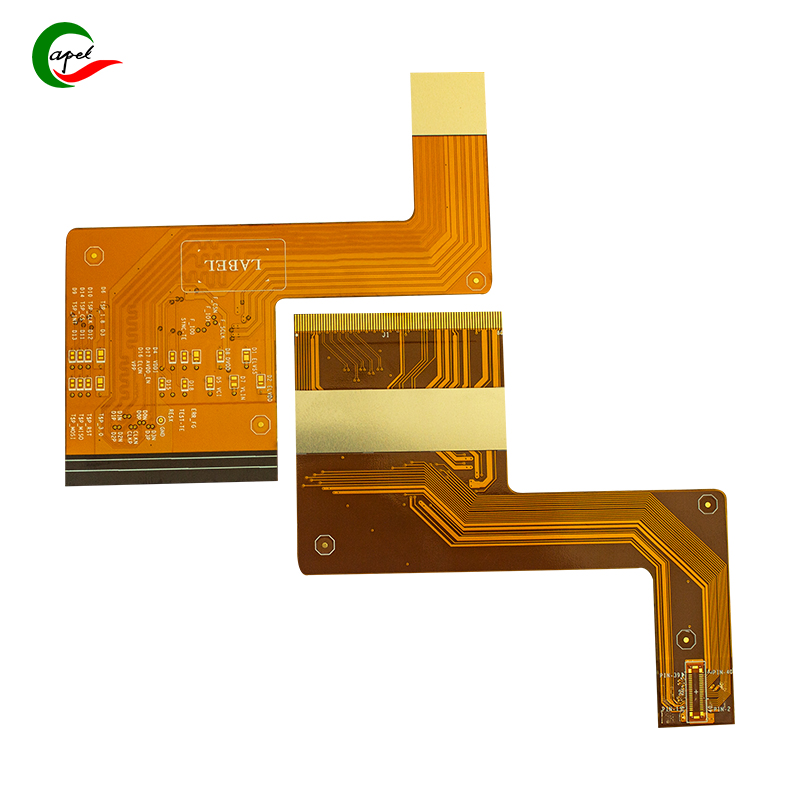Date: 2025-10-17
Working with flexible PCBs in -40°C environments presents unique challenges that demand careful material selection and process adjustments. Through our experience with automotive and aerospace applications, we've developed practical approaches that ensure solder joint reliability under these demanding conditions.
Understanding the Material Science Behind Cold Temperature Failures
The fundamental issue at -40°C stems from material property changes. Standard solder alloys undergo significant embrittlement, losing the ductility needed to accommodate thermal stresses. This problem is compounded by the coefficient of thermal expansion mismatch between the polyimide substrate (approximately 50 ppm/°C) and common solder materials (around 22 ppm/°C for Sn63Pb37).
We've observed that the rapid cooling rates experienced during soldering can create microstructural defects that become failure initiation points under thermal cycling. The porous, granular structure of improperly cooled solder provides pathways for crack propagation when subjected to mechanical stress at low temperatures.
Selecting Appropriate Solder Alloys for Cryogenic Conditions
Our testing has shown that tin-bismuth based alloys outperform traditional options for low-temperature applications:
Sn42Bi58 has become our baseline choice for most flexible PCB applications. Its lower melting point (138°C) and better low-temperature ductility make it suitable for consumer and automotive applications where temperatures may reach -40°C.
For more demanding applications, we prefer Sn41Bi57Ag2. The silver addition improves mechanical strength while maintaining good low-temperature performance. This alloy has proven reliable in aerospace applications where both thermal cycling and vibration resistance are critical.
Sn38Bi58Zn4 works well for ultra-thin flexible circuits where adhesion to the polyimide substrate is challenging. The zinc content improves wetting characteristics without significantly increasing brittleness.
Optimizing the Soldering Process for Low-Temperature Reliability
Process control is equally important as material selection. We've established these key parameters through extensive experimentation:
Preheating the flexible substrate to 80-100°C before soldering has proven crucial. This prevents rapid heat extraction from the solder joint, which leads to incomplete wetting and weak interfacial bonds.
We maintain soldering temperatures between 160-180°C for Sn-Bi alloys - high enough to ensure proper flow and wetting but low enough to avoid damaging the polyimide substrate. The soldering time is carefully controlled to 3-5 seconds per joint.
Controlled cooling is essential. We avoid forced air cooling and instead allow joints to cool naturally at rates below 5°C per second. This gradual cooling promotes favorable microstructure formation and reduces internal stresses.
Design Considerations for Low-Temperature Applications
Joint geometry and board design significantly impact low-temperature performance:
We increase pad sizes by 20% compared to standard designs. The additional surface area provides better stress distribution and improves joint strength under thermal cycling conditions.
Pad corners are always rounded with a minimum 0.1mm radius. Our finite element analysis shows this reduces stress concentration by approximately 30% during thermal cycling.
We incorporate polyimide reinforcement around solder joints, extending at least 1mm beyond the pad perimeter. This local stiffening reduces strain on the solder joint during flexing operations.
Joint height is carefully controlled to 0.3mm maximum. Taller joints experience greater CTE mismatch stresses and are more prone to failure during thermal cycling.
Validation and Testing Protocols
Reliability validation involves comprehensive testing:
Low-temperature storage testing at -40°C for 1000 hours helps identify materials compatibility issues and early-life failure mechanisms.
Thermal cycling between -40°C and 85°C reveals CTE mismatch problems and interfacial degradation. We typically require survival through 1000 cycles without significant resistance changes.
Mechanical testing at low temperatures combines bending with electrical monitoring. This simultaneous stress application helps identify weak joints that might pass individual tests.
Common Implementation Errors
Through our work, we've identified several frequent mistakes:
Using standard SAC305 or Sn-Pb solders for low-temperature applications inevitably leads to premature failures due to their poor low-temperature ductility.
Skipping the preheating step results in cold solder joints with poor microstructure and weak interfacial bonds.
Applying excessive solder creates bulky joints that experience higher thermal stresses and are more likely to crack.
Neglecting local reinforcement allows substrate flexing to transfer directly to the solder joint, accelerating fatigue failure.
Long-Term Performance Considerations
Successful low-temperature solder joints require attention to the entire system design. We've found that considering the operational environment during the initial design phase yields more robust solutions than attempting to fix problems during manufacturing.
The most reliable designs incorporate appropriate solder alloys, optimized joint geometries, and controlled processes from the beginning. This holistic approach has enabled us to achieve solder joint reliability exceeding five years in continuous -40°C service across multiple application domains.
related link:
Capel manufacturing PCBs since 2009. Professional technology and high-precision Printed Circuit Boards involved in Medical, IOT, UAV, Aviation, Automotive, Aerospace, Industrial Control, Artificial Intelligence, Consumer Electronics etc..